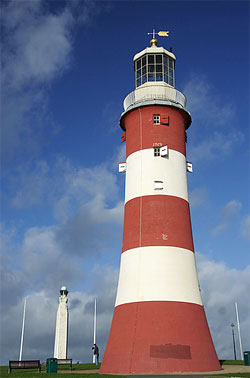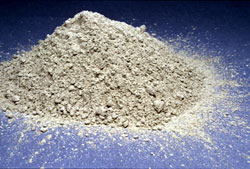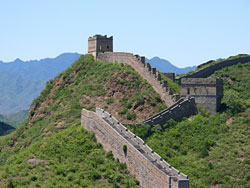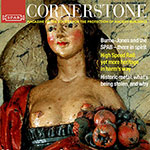A Brief History of Lime
 The first mortars were made from mud or clay. These materials were used because of availability and low cost. The Egyptians utilized gypsum mortars to lubricate the beds of large stones when they were being moved into position. Each of these materials, however, did not perform well in the presence of high levels of humidity and water.
The first mortars were made from mud or clay. These materials were used because of availability and low cost. The Egyptians utilized gypsum mortars to lubricate the beds of large stones when they were being moved into position. Each of these materials, however, did not perform well in the presence of high levels of humidity and water.
It was discovered that limestone, when burnt and combined with water, produced a material that would harden with age. The earliest documented use of lime as a construction material was approximately 4000 BC when it was used in Egypt for plastering the pyramids. The beginning of the use of lime in mortars is not clear. It is well documented, however, that the Roman Empire used lime based mortars extensively. Vitruvius, a Roman architect, provided basic guidelines for lime mortar mixes:
"... When it [the lime] is slaked, let it be mingled with the sand in such a way that if it is pit sand three of sand and one of lime is poured in; but if the same is from the river or sea, two of sand and one of lime is thrown together. For in this way there will be the right proportion of the mixture and blending."
Mortars containing only lime and sand required carbon dioxide from the air to convert back to limestone and harden. Lime/sand mortars hardened at a slow rate and would not harden under water. The Romans created hydraulic mortars that contained lime and a pozzolan such as brick dust or volcanic ash. These mortars were intended be used in applications where the presence of water would not allow the mortar to carbonate properly. Examples of these types of applications included cisterns, fish-ponds, and aqueducts.  The most significant developments in the use of pozzolans in mortars occurred in the 18th century. It was discovered that burning limestone containing clays would produce a hydraulic product. In 1756, James Smeaton developed perhaps the first hydraulic lime product by calcining Blue Lias limestone containing clay. An Italian pozzolanic earth from Civita Vecchia was also added to provide additional strength. This mortar mixture was used to build the Eddystone Lighthouse. James Parker patented a product called Roman cement or natural cement in 1796. Natural cement was produced by burning a mixture of limestone and clay together in kilns similar to those used for lime. The resulting product was ground and stored in waterproof containers. Typically natural cements had higher clay contents than hydraulic lime products which allowed for better strength development. Natural cement mortar was used in construction where masonry was subjected to moisture and high levels of strength were needed.
The most significant developments in the use of pozzolans in mortars occurred in the 18th century. It was discovered that burning limestone containing clays would produce a hydraulic product. In 1756, James Smeaton developed perhaps the first hydraulic lime product by calcining Blue Lias limestone containing clay. An Italian pozzolanic earth from Civita Vecchia was also added to provide additional strength. This mortar mixture was used to build the Eddystone Lighthouse. James Parker patented a product called Roman cement or natural cement in 1796. Natural cement was produced by burning a mixture of limestone and clay together in kilns similar to those used for lime. The resulting product was ground and stored in waterproof containers. Typically natural cements had higher clay contents than hydraulic lime products which allowed for better strength development. Natural cement mortar was used in construction where masonry was subjected to moisture and high levels of strength were needed.

Joseph Aspdin an English mason/builder patented a material called Portland Cement in 1824. Portland cement consisted of a blend of limestone, clay and other minerals in carefully controlled proportions which were calcined and ground into fine particles. Though some portland cement was imported from Europe, it was not manufactured in the United States until 1871. The consistency and higher strength levels of portland cement allowed it to replace natural cements in mortars. Portland cement by itself had poor workability. Portland cement combined with lime provided an excellent balance between strength and workability. The addition of portland cement to lime mortars increased the speed of the construction process for masonry building due to faster strength development. Mix designs incorporating different amounts of lime and portland cement were developed.
 Until approximately 1900, lime putty was used in construction applications. Limestone was burned in small kilns often built on the side of a hill to facilitate loading. Wood, coal and coke were used as fuel. The quicklime produced from these kilns was added to water in a pit or metal trough and soaked for an extended period of time. The time required for soaking was dependent on the quality of the quicklime and could range from days to years. It was generally thought that the longer the quicklime was soaked, the better it would perform.
Until approximately 1900, lime putty was used in construction applications. Limestone was burned in small kilns often built on the side of a hill to facilitate loading. Wood, coal and coke were used as fuel. The quicklime produced from these kilns was added to water in a pit or metal trough and soaked for an extended period of time. The time required for soaking was dependent on the quality of the quicklime and could range from days to years. It was generally thought that the longer the quicklime was soaked, the better it would perform.
Lime products have played a significant role in the masonry construction for thousands of years. Prior to 1930, most masonry construction utilized lime based mortars.
Lime has proven performance that is demonstrated by structures, such as the Great Wall of China, which have lasted for hundreds of years. The reasons for using lime in mortar 2000 years ago, still remain valid today in modern masonry construction.
